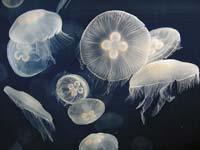Genes of bacteria, the weapon of jellyfish

Bacteria may occur after the puncture of jellyfish. In fact, researchers at the Pierre et Marie Curie University in Paris have discovered that a gene needed for jellyfish to prick is very similar to a gene of bacteria. According to researchers, their phylogenetic studies suggest that this gene passed from the genome of bacteria to the ancestors of jellyfish.
If this were so, it would be a case of horizontal gene transfer. That is, gene transfer between two non-parental organisms. Although it is relatively common in microbes, very few cases are known in animals.
All the famous filum creatures of the knidarian genes, such as jellyfish, anemones and corals, have it. It encodes part of the molecule that synthesizes the polymer PGA (polygammaglutamate). PGA is the main component of cnidarian urticant cells. These cells regulate osmotic pressure through the PGA. And when a sudden change occurs in that pressure they release the poisonous punch. In bacteria, protective capsules are the same compounds.
The same gene has been found in several sponges, worms and fungi. Therefore, researchers say that this gene may have been passed several times from one species to another. However, not everyone agrees: some believe that horizontal transfer is not the only way, and that, for example, it is possible that after being vertically transferred from distant ancestors has been lost in some beings.





